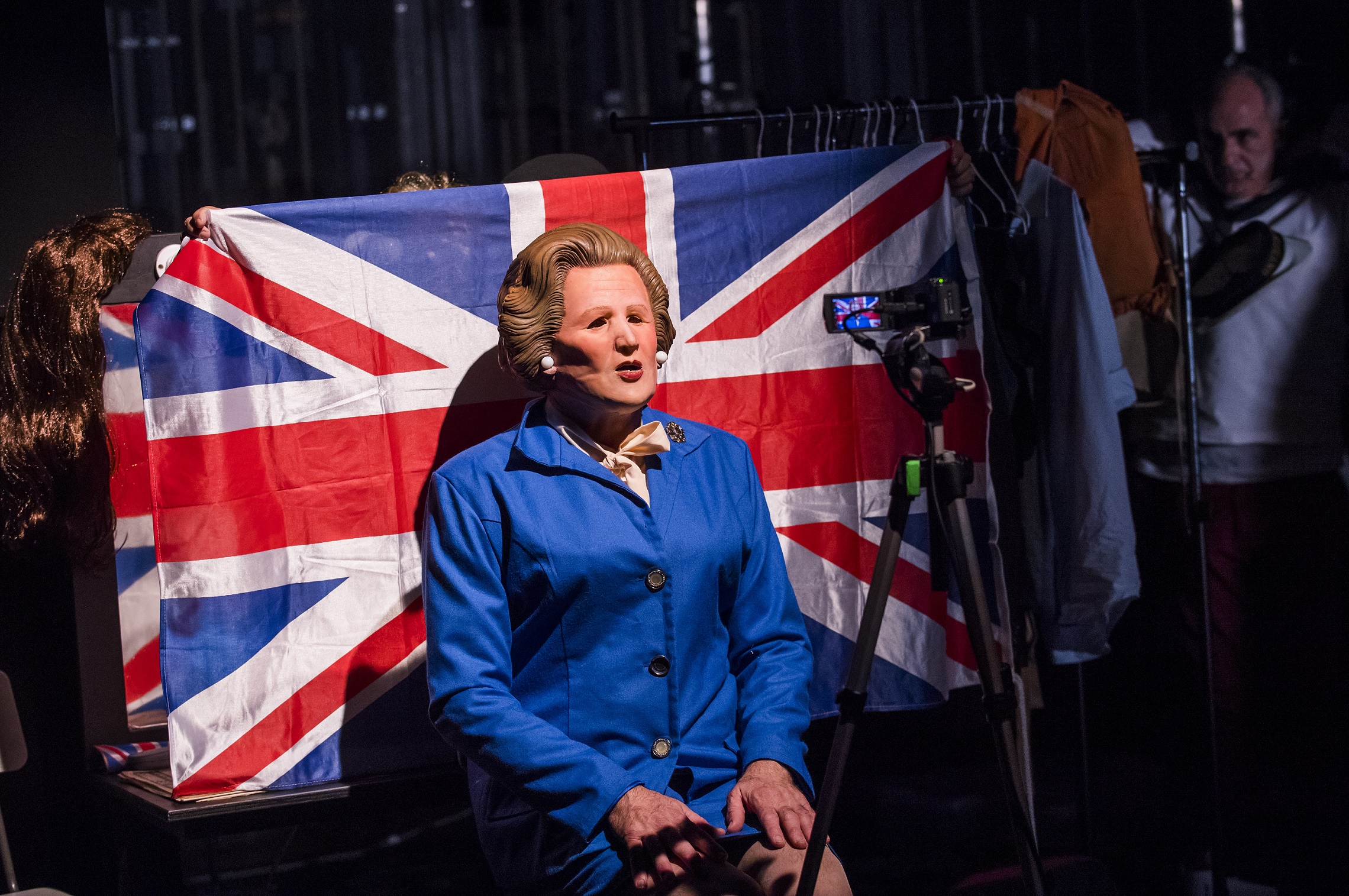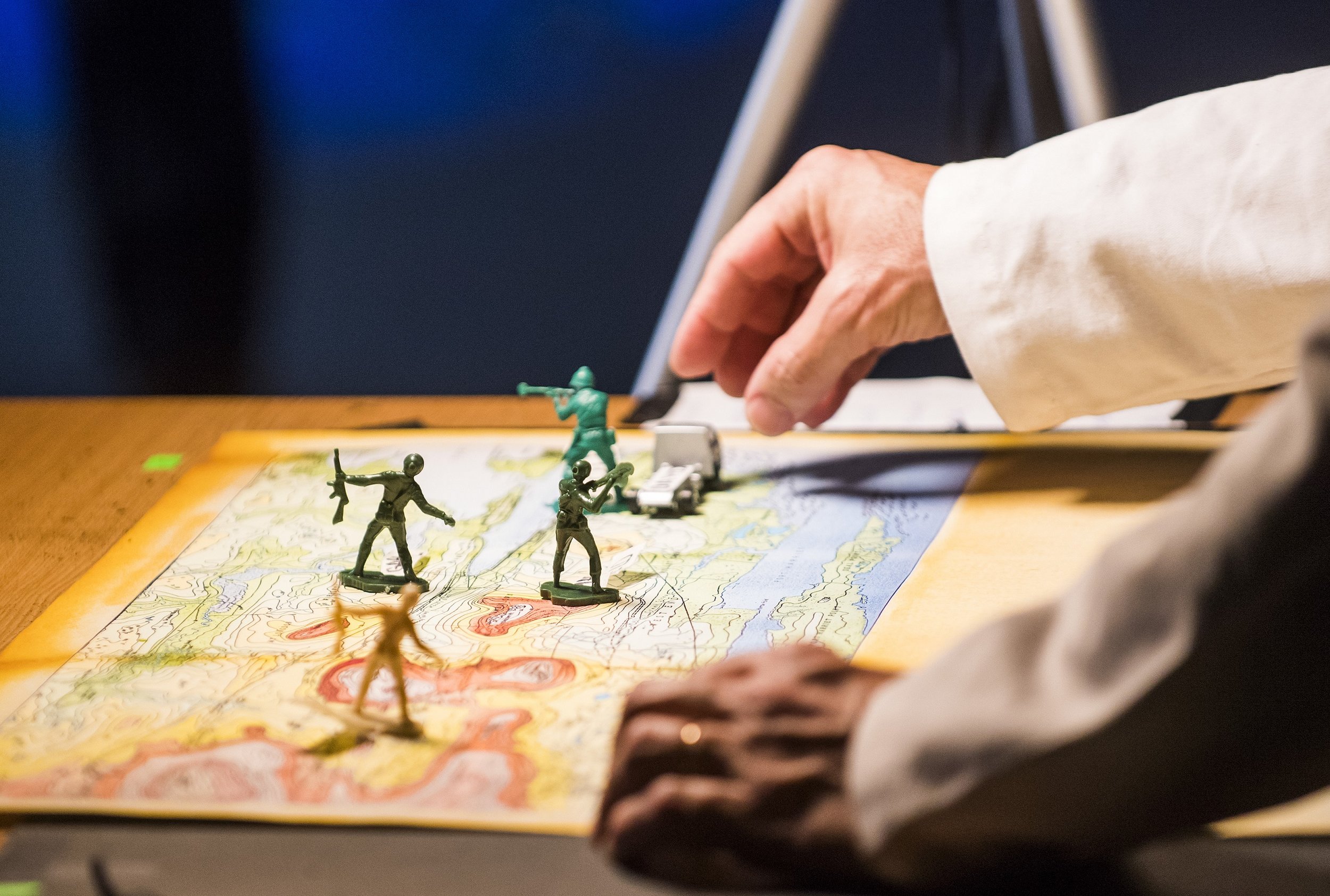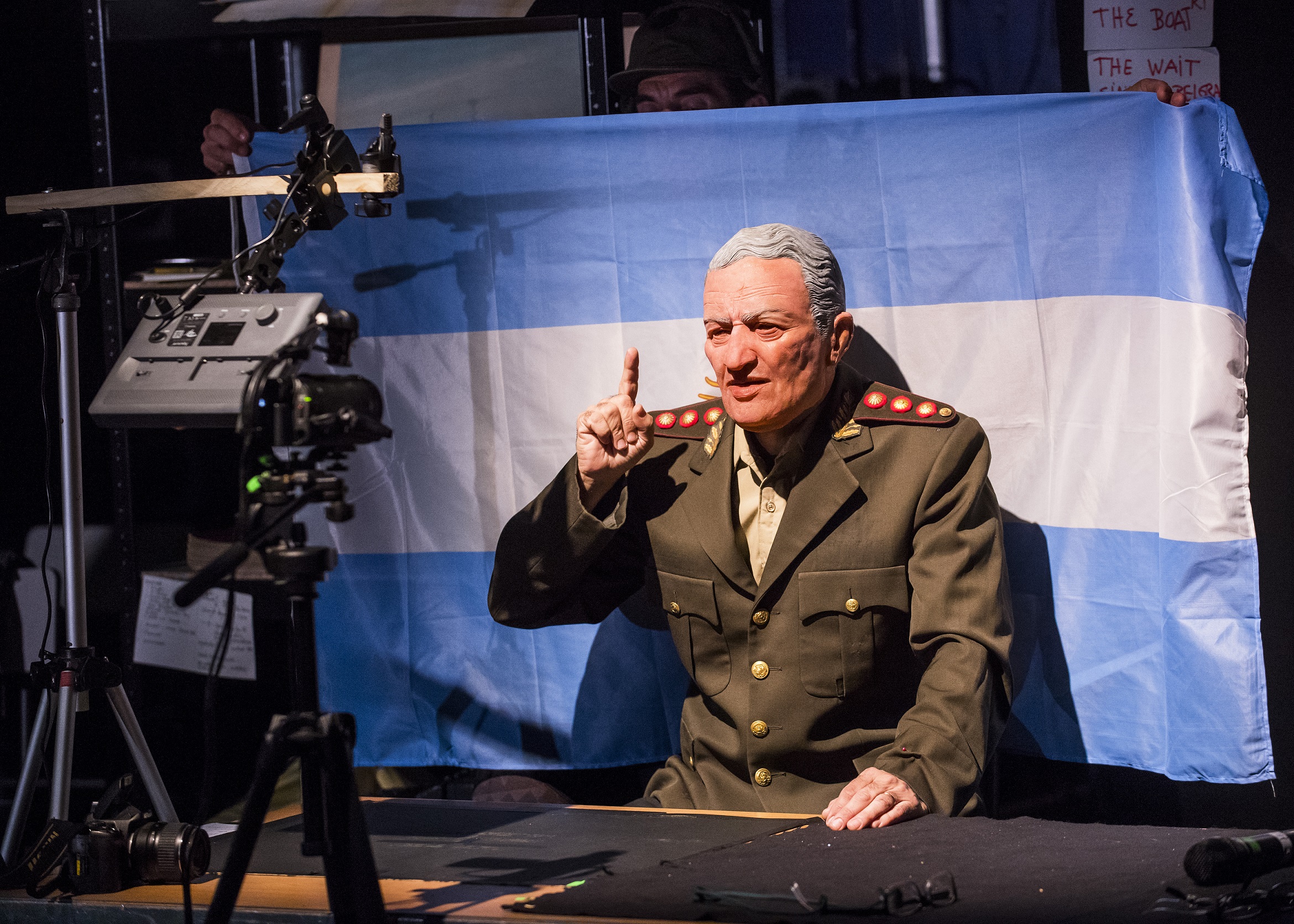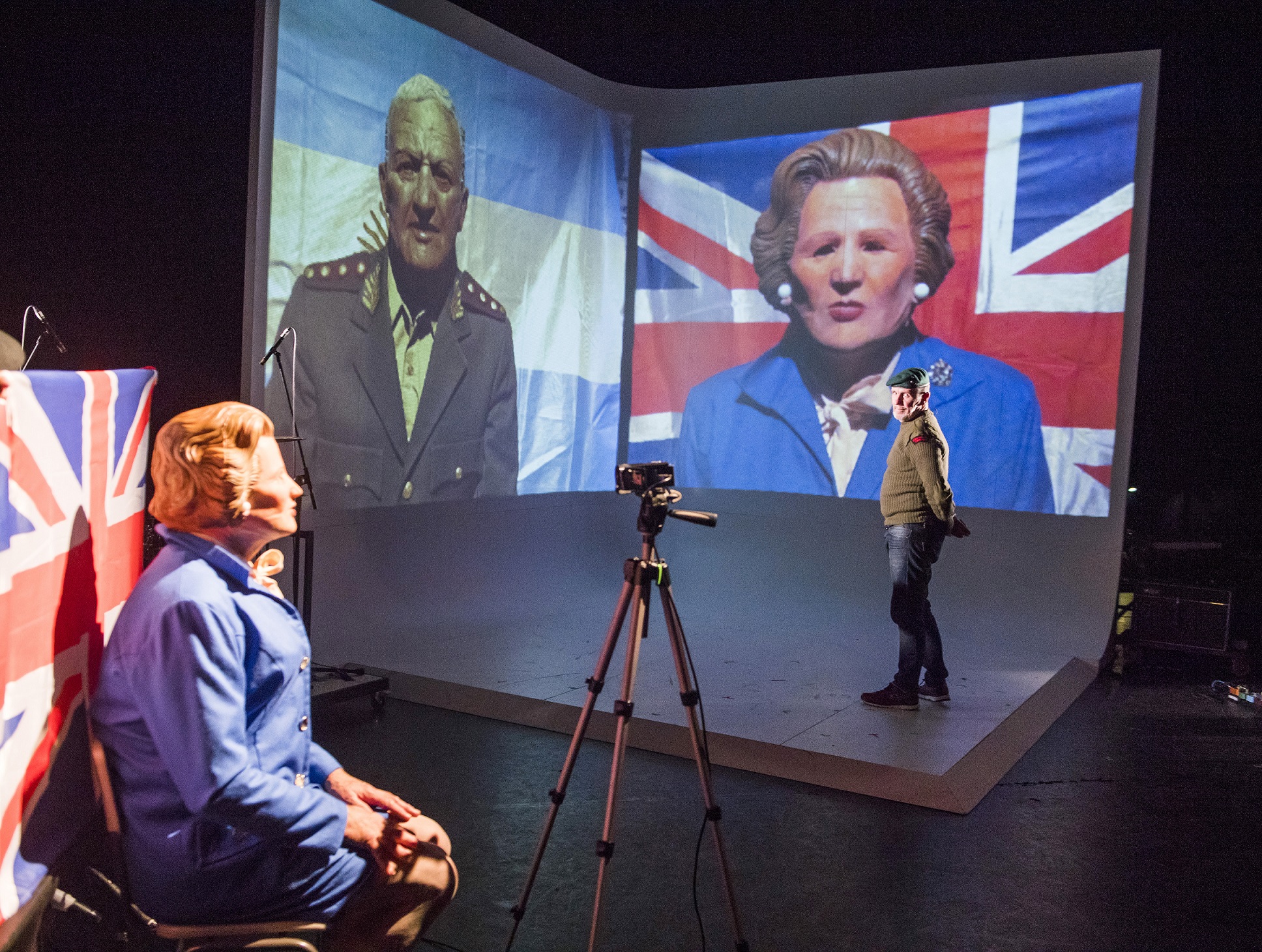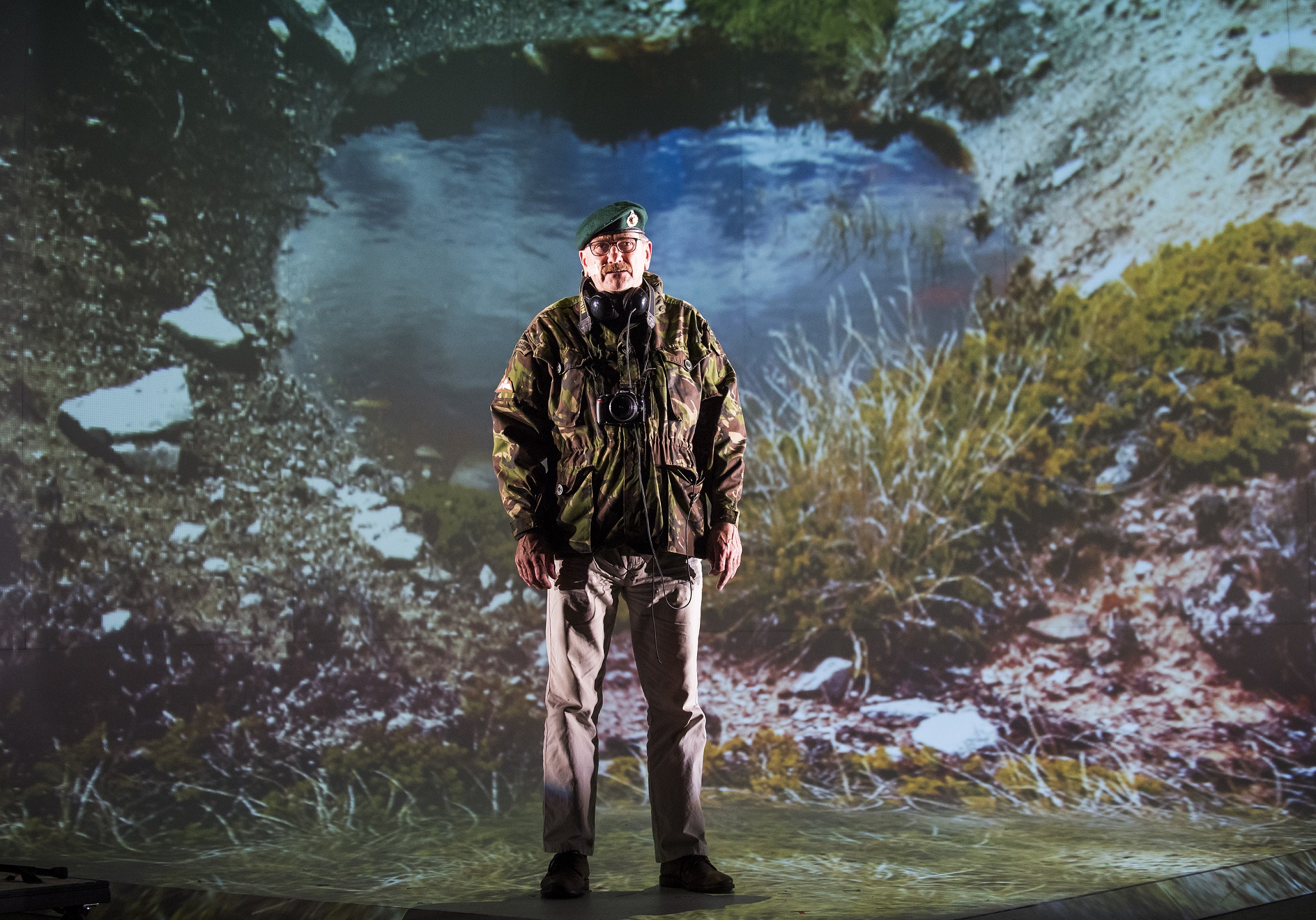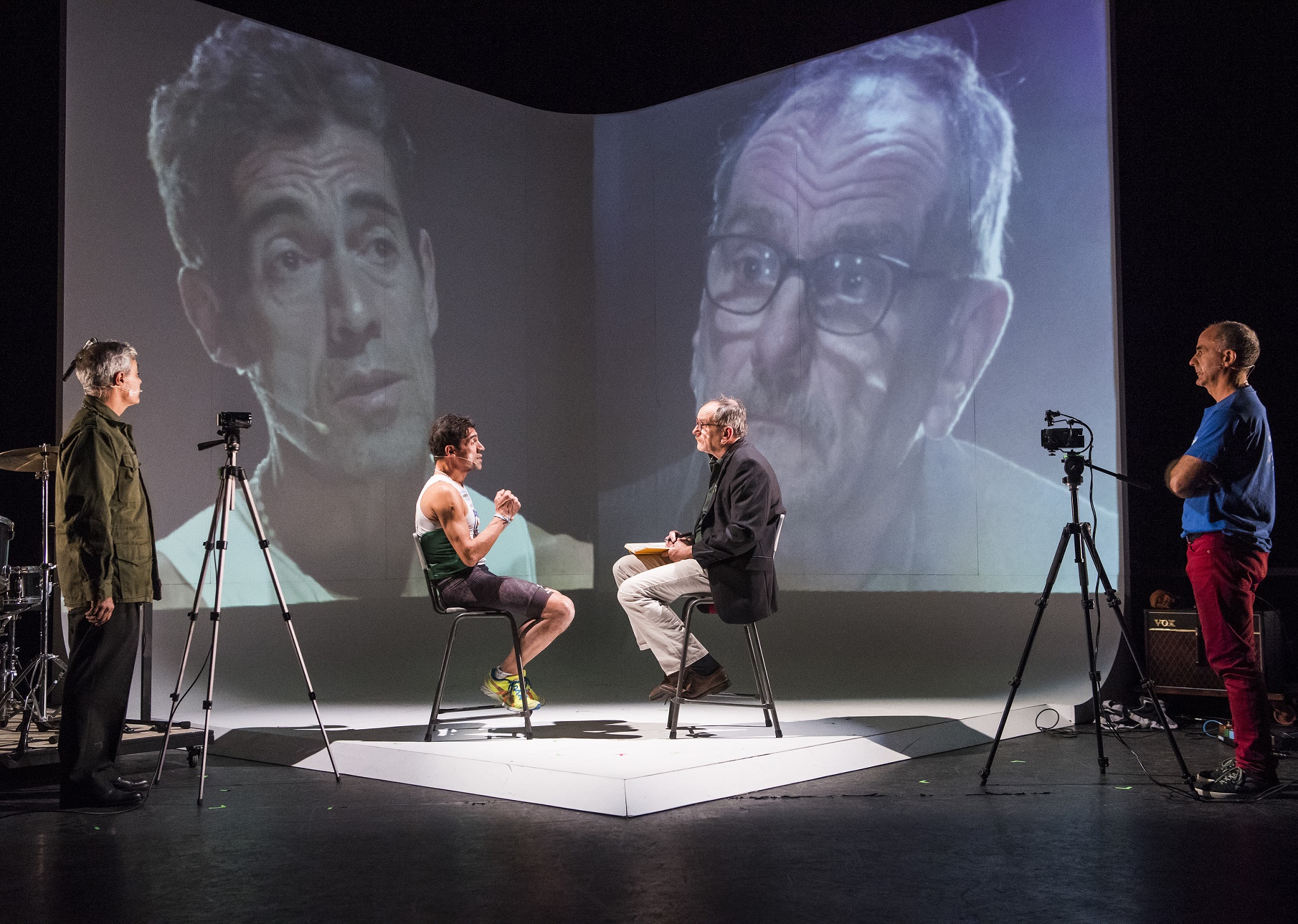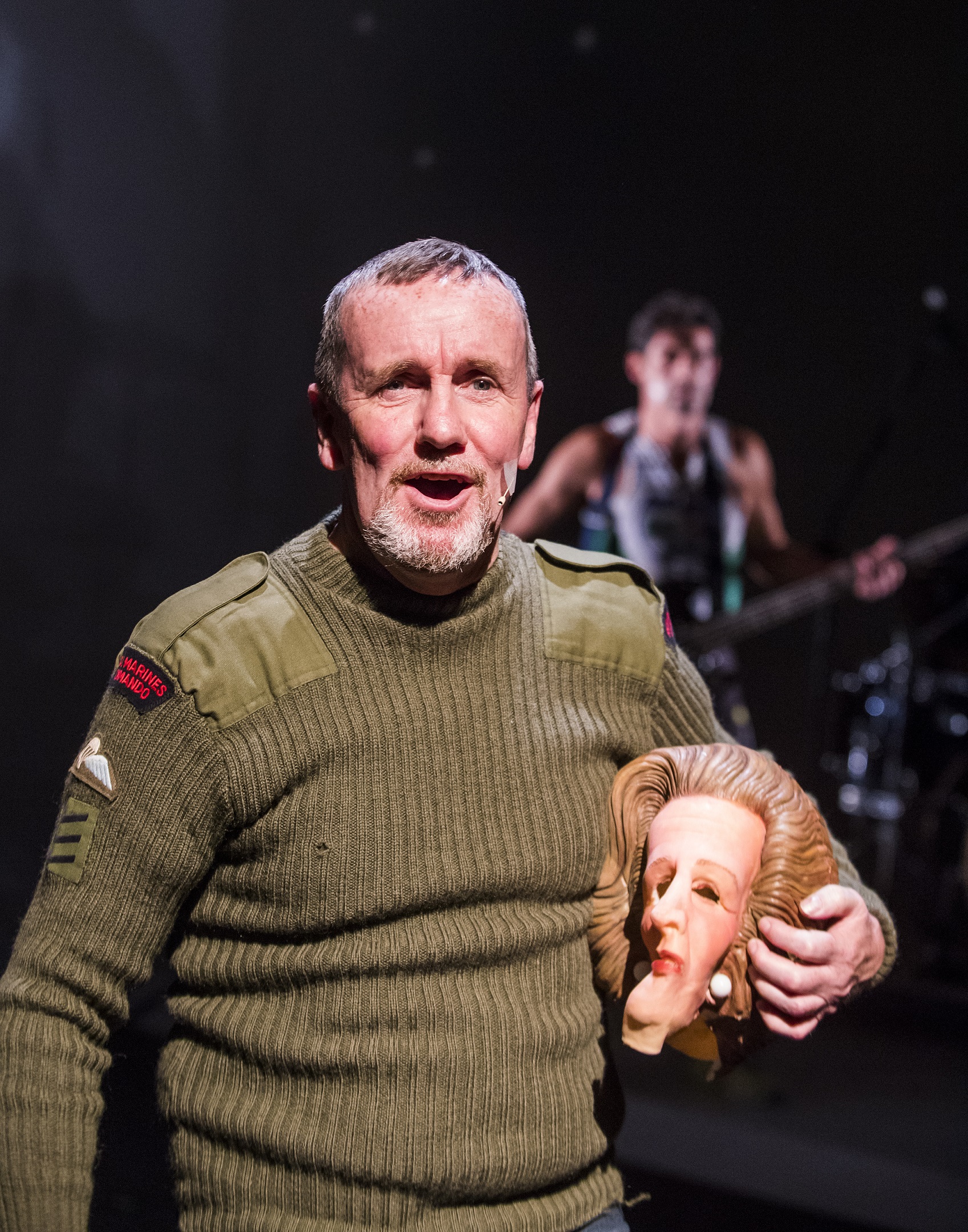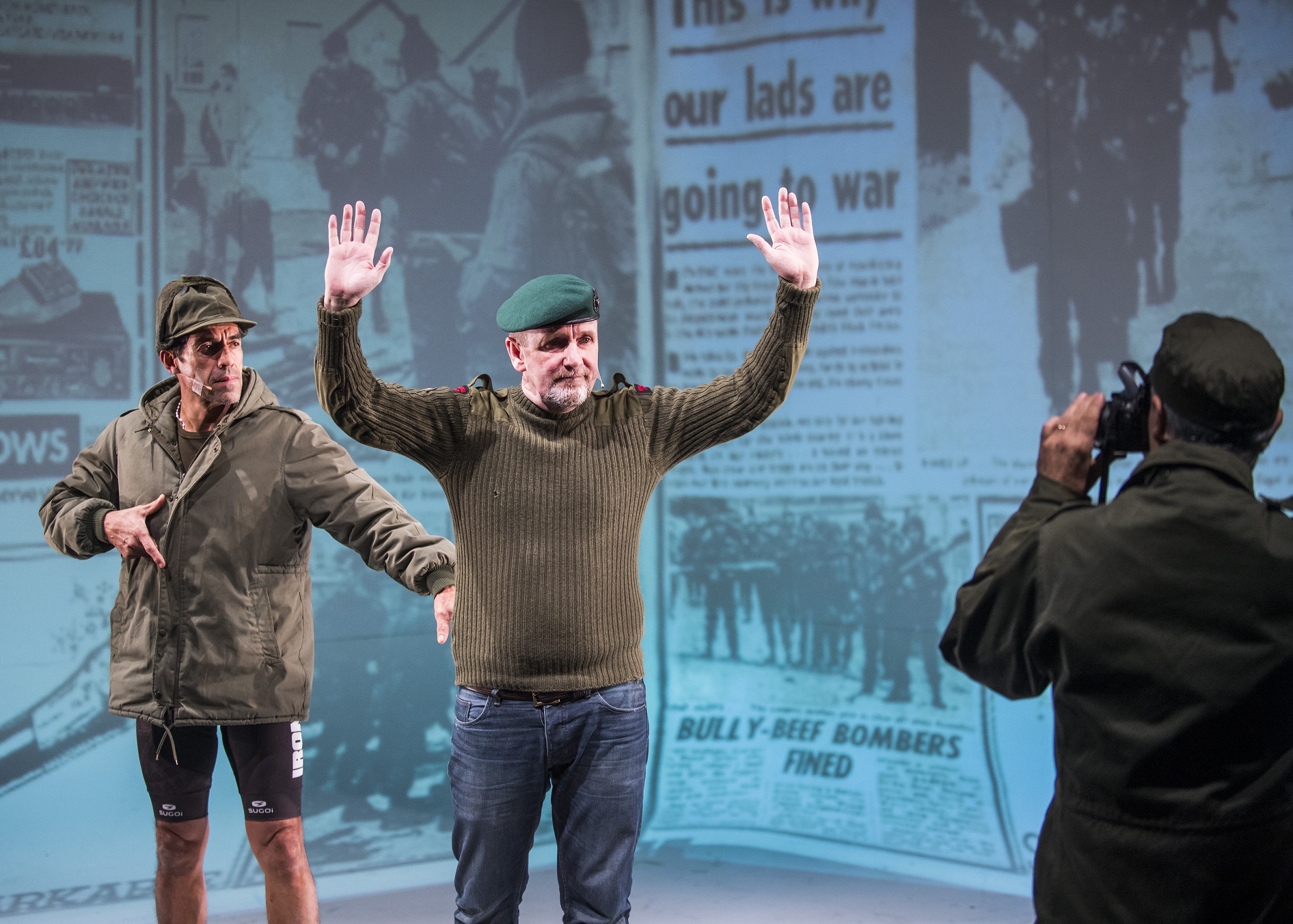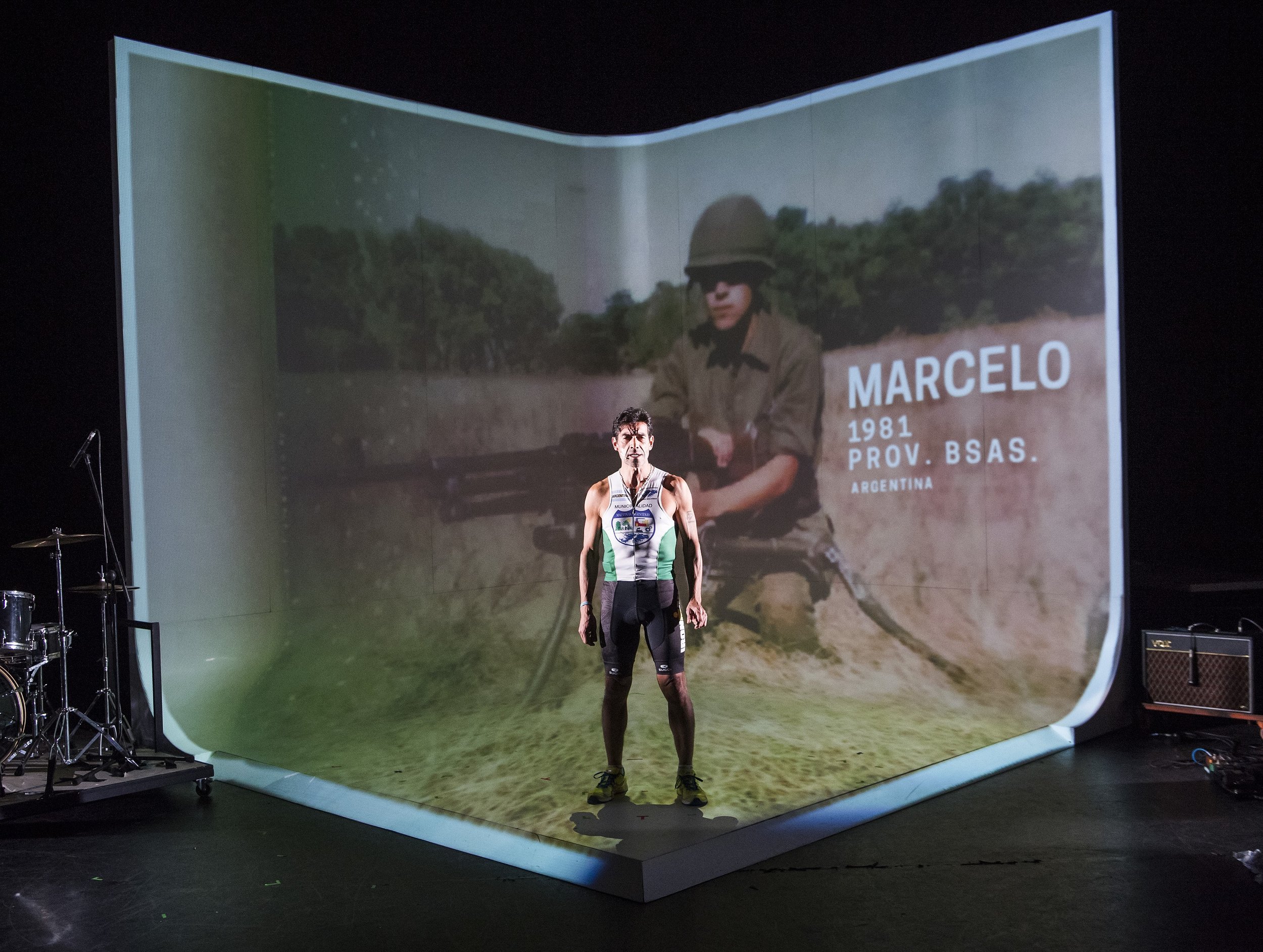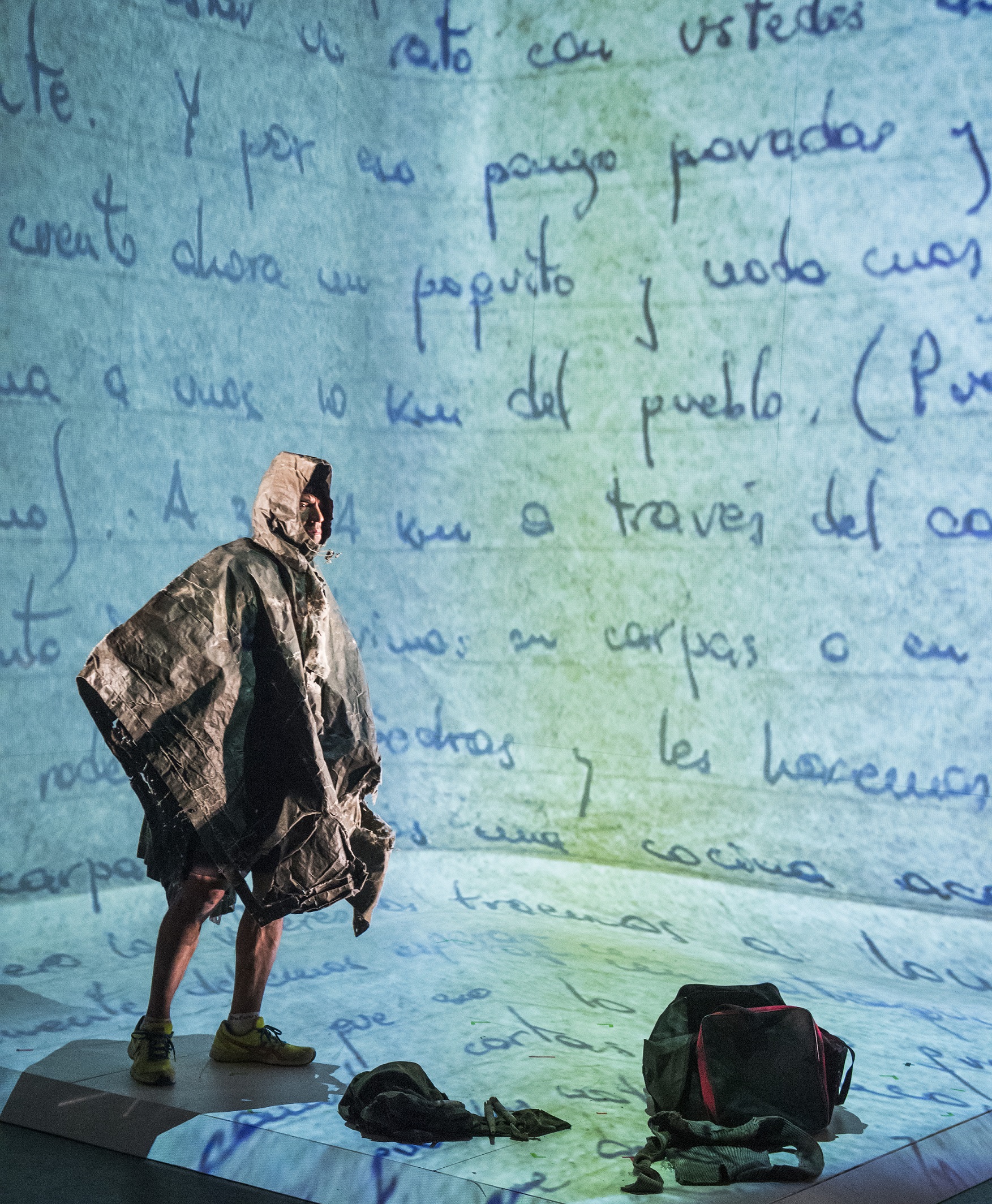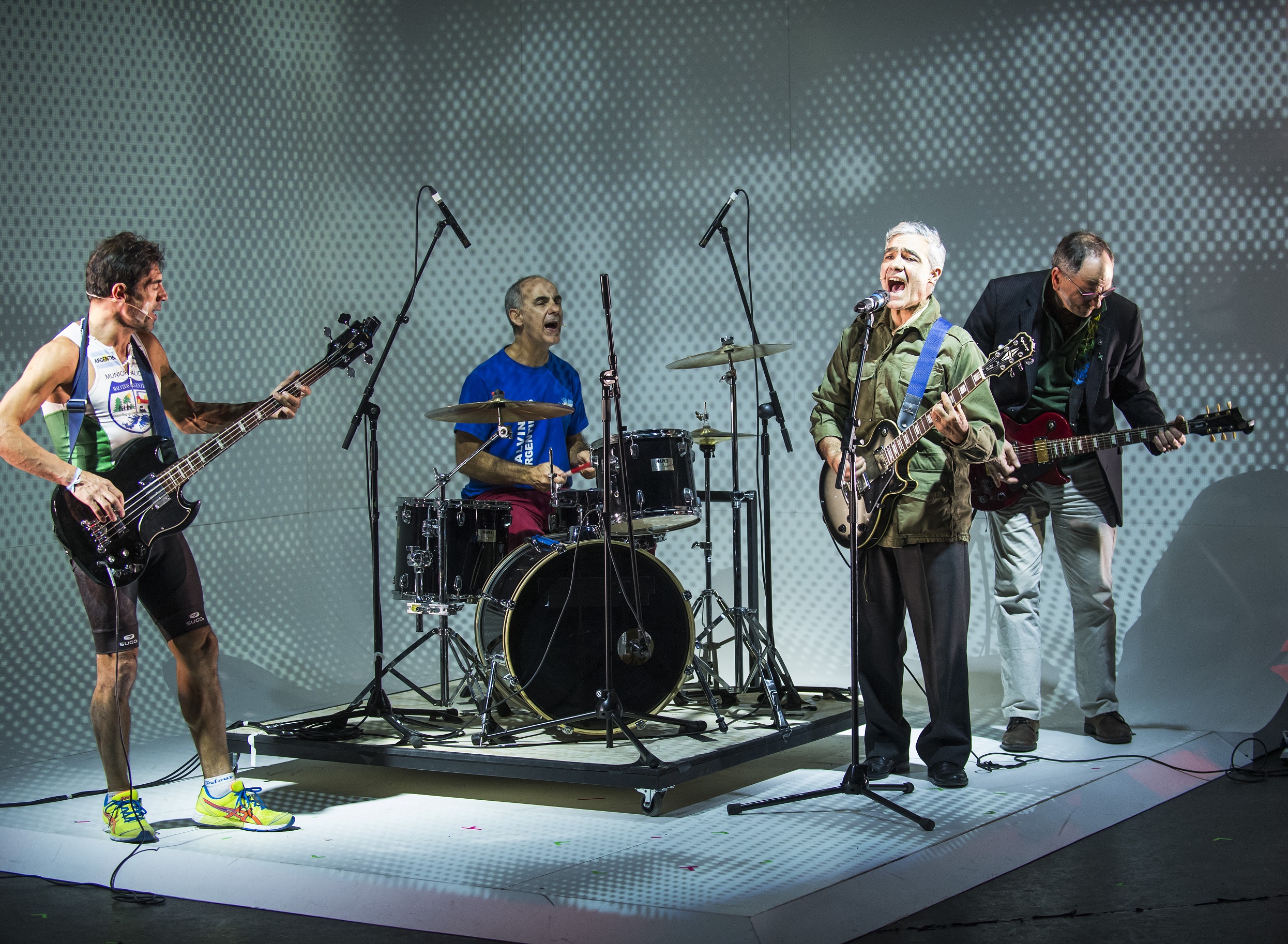Minefield: the Unsung Stories of the Malvinas
Minefield marked the opening night of the ¡Viva! Festival! an annual celebration of Spanish and Latino culture, from HOME and Instituto Cervantes. Described as the festival that celebrates coming together in a world of division, this opening production exemplifies the spirit of cultural collaboration and provides a platform for unheard voices.
Presenting the perspective of three Argentines, two Brits and a Ghurka soldier who represented the British forces, Minefield strives for political neutrality. During each individual story, the audience’s heartstrings are pulled in different directions. This culminates in each side telling the “official” national version of history and even openly accusing their opponents of unforgivable acts which remain present in their minds to this day. Yet, concluding with a rousing, punk-rock performance, it becomes clear that this is not about a single experience of war; rather Minefield is about the mutual respect and identification that veterans share with one another. Politics and language aside, these men are able to understand each other to a degree that few can share.
In several moving highlights, the performers find cathartic release through music. This production does not attempt to recreate scenes of war dramatically. However, through the emotionally-charged musical performances, featuring loud drums, strobe lighting and guitar feedback, the audience are offered a mere glimpse of the atmosphere described. The musical refrains punctuate the production’s chopping and changing, and, though the drum kit is somewhat cumbersome, it verbalises the anger and frustration that these stoic men don’t always seem able to put into words.
Reeling off statistics whilst building to a climactic drum solo, Ruben Otero, of the Argentine Navy, describes his feelings without language. Beyond this, another captivating high point comes when we see Marcelo Vallejo explain his trauma to a therapist. Not strictly concerned with furthering the narrative, these moments of pure emotion gave me goosebumps. I must say, I found the Argentine tales particularly striking; perhaps because they report the losing side; perhaps out of some inherited sense of guilt; or perhaps because these men tell captivating stories, even though a good portion of their audience don't speak their language.
Far from traditional theatre, Minefield is an exercise in honest, intimate storytelling. Six men tell six individual autobiographical tales, in two languages. There are very few scenes featuring dialogue between the performers; rather, this production is in dialogue with the wider audience.
As a live documentary, it is clear that these men are not actors, as some take to the stage a little more naturally than others. However, what shines through is their emphatic connection to the experience and the newfound enthusiasm to share their side of the story.
Replacing traditional performance, the cast embrace the documentary-style of the project, employing onstage video cameras and a live stream to the large screen upstage. Bringing us closer to the action, we are guided through an exhibition of artefacts. Replacing props with real photographs, magazines and salvaged items of kit adds an unparalleled level of realism. In some ways, Minefield is a tour through a museum that doesn’t yet exist.
Having said that, there are some distinctly theatrical moments, such as the masked caricatures of Margaret Thatcher and President Galtieri. These add a chilling sense of the absurd, at once reporting and satirising the past. As if straight out of Spitting Image, the men behind the masks give quietly applaudable mime performances.
Unfortunately, the initial drag act leads into an uncomfortable recreation of the laddish behaviour in the squadron. Whilst some may salute the brave act of performance, I cringed. Far preferable to the cheap striptease laugh, each personal story gives way to brief glimmers of humour and a real sense of intimacy between “actor” and audience. (The only slight shame is that the well-delivered comic timing is often undermined by the surtitles revealing the punchline!) Though presenting a serious and tear-jerking history lesson, the cast and crew successfully prevent Minefield from becoming a dirge.
It’s difficult to review this production in line with any standard factors. Skilful acting isn’t relevant here; in its place stands captivating sincerity. It’s easy to forgive the clunky movements, any unclear articulation and the almost non-existent momentum, as these veterans earn our respect and admiration. I, for one, was hanging on their every word.
To see Minefield, or any of the ¡Viva! Festival!, visit their website for more information.
Title image by Tristram Kenton

